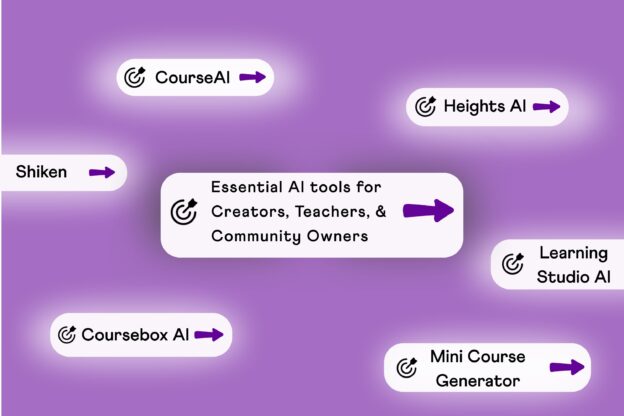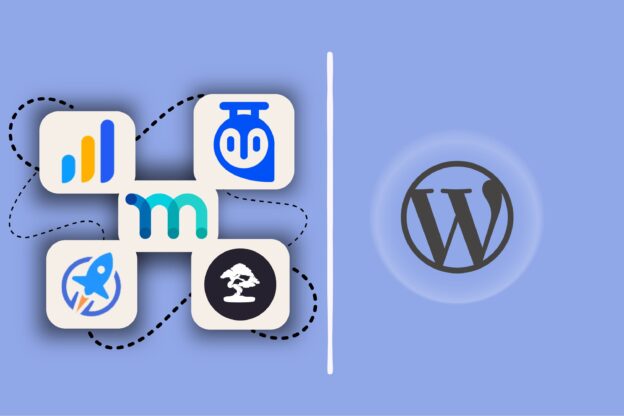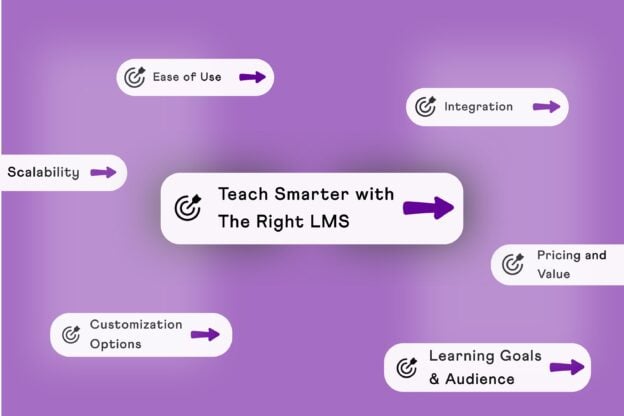The term “Learning Pathway” has emerged as a guiding principle for structuring and streamlining the learning process. It’s a carefully crafted roadmap that shepherds students along a coherent path towards mastering a specific subject or skill. A well-designed Learning Pathway offers a plethora of benefits for both students and instructors alike.
For students, a Learning Pathway provides a sense of direction and purpose, transforming the learning experience from a labyrinthine journey into a clear and manageable path. It breaks down complex concepts into digestible chunks, ensuring that students build a solid foundation of knowledge before venturing into more challenging areas. This structured approach fosters a sense of confidence and empowers students to take ownership of their learning.
Instructors, too, reap substantial benefits from implementing Learning Pathways. By meticulously designing and organizing the learning content, instructors can streamline their teaching efforts and ensure that every lesson aligns with the overall objective. This clarity of purpose enhances the effectiveness of instruction, allowing instructors to focus on delivering engaging and stimulating learning experiences.
The Importance of a Well-Structured Learning Journey
A well-structured Learning Pathway serves as a beacon, guiding students through the intricacies of a subject, from the fundamental concepts to the intricate applications. It provides a sense of order and coherence, preventing students from getting lost in the vast expanse of information. This structured approach fosters deeper comprehension and retention, leading to more meaningful learning outcomes.
Key Elements of a Successful Learning Pathway

A successful Learning Pathway encompasses several key elements that contribute to its effectiveness:
Clearly Defined Learning Objectives
The learning pathway must start with a clear articulation of the specific knowledge, skills, and attitudes students are expected to acquire. These objectives serve as the roadmap, guiding the selection and organization of learning content.
Organized Content Sequencing
The pathway should effectively sequence the learning content, ensuring a logical progression from foundational concepts to more advanced applications. This sequencing ensures that students build a strong foundation before moving on to more complex topics.
Variety of Learning Activities
To cater to diverse learning styles and preferences, the pathway should incorporate a variety of learning activities, including text, videos, simulations, quizzes, discussions, and hands-on projects. This variety ensures that every student can engage with the material in a way that suits their learning style.
Formative Assessments
Regular formative assessments, such as quizzes, polls, and discussions, allow instructors to gauge students’ progress and identify areas that require further attention. These assessments also provide valuable feedback to students, helping them identify their strengths and weaknesses.
Clear Navigation and Guidance
The pathway should provide clear navigation and guidance, with clear instructions, rubrics, and links to relevant resources. This guidance ensures that students have the support they need to navigate through the learning material effectively.
Engaging and Interactive Elements
To maintain student engagement and motivation, the pathway should incorporate engaging and interactive elements, such as gamification, rewards, and personalized feedback. These elements can transform the learning experience into an enjoyable and rewarding journey.
Understanding Your Learners
Before embarking on the journey of crafting a successful Learning Pathway, it’s crucial to gain a deep understanding of the learners you’re aiming to empower. This introspection involves two key aspects:
A. Identifying Your Target Audience

1. Age: Different age groups possess varying learning capabilities and preferences. Tailoring the content and activities to the specific age range of your students ensures optimal engagement and comprehension.
2. Learning Style: Recognizing the diverse learning styles present in your classroom is paramount. Some students thrive on visual aids, while others prefer auditory explanations or hands-on activities. A well-designed Learning Pathway caters to these varied learning styles by incorporating a diverse range of instructional methods.
3. Prior Knowledge and Experience Level: Assessing students’ existing knowledge and prior experience with the subject matter is essential. Building upon this foundation ensures that the Learning Pathway seamlessly integrates with their existing understanding, preventing gaps in knowledge and fostering a sense of accomplishment.
B. Defining Learning Objectives

Once you have a clear understanding of your target audience, it’s time to define the specific learning objectives of your Learning Pathway. These objectives serve as the guiding stars, illuminating the knowledge, skills, and attitudes students are expected to acquire by the end of the journey.
Setting Clear and Measurable Learning Outcomes
Effective learning objectives are not merely aspirations; they are clear and measurable. This means translating your objectives into concrete statements that define what students will be able to do after completing the Learning Pathway. For example, instead of stating “Students will understand the concept of photosynthesis,” a more measurable objective could be “Students will be able to explain the process of photosynthesis, identifying the key elements involved and their respective roles.”
Designing the Learning Pathway
Once you have a firm grasp of your target audience and learning objectives, it’s time to meticulously craft the Learning Pathway. This stage involves meticulously designing the content and activities that will guide students towards mastery.
A. Content Sequencing:
The way you sequence your content plays a pivotal role in the effectiveness of your Learning Pathway. Here are two key aspects to consider:
1. Organize Content Logically

- Break down complex topics into smaller, manageable steps: Complex concepts can be daunting for learners. To ensure comprehension and prevent information overload, break down these topics into bite-sized chunks that students can easily digest and retain.
- Follow a natural progression from foundational concepts to advanced applications: Building upon a solid foundation is crucial for effective learning. Ensure your Learning Pathway follows a logical progression, starting with the fundamental concepts and gradually introducing more advanced applications as students acquire a deeper understanding.
2. Consider Different Learning Styles

Every learner possesses a unique learning style. To cater to this diversity and foster inclusive learning, integrate a variety of elements into your Learning Pathway:
- Text: Traditional text-based materials remain valuable for conveying information and fostering critical thinking skills.
- Videos: Engaging video content can visually represent complex concepts and cater to learners who thrive on visual information.
- Interactive activities: Hands-on activities, simulations, and games can solidify understanding and make learning more enjoyable for kinesthetic and interactive learners.
- Discussions: Encouraging discussions and collaborative learning activities allows students to clarify their understanding, exchange perspectives, and learn from each other.
B. Engaging Learning Activities:
1. Utilize various instructional methods

A well-designed Learning Pathway shouldn’t rely solely on a single teaching method. To cater to diverse learning styles and keep students engaged, incorporate a variety of approaches:
- Lectures: While often seen as traditional, well-structured lectures can effectively introduce new concepts and provide a foundation for further exploration.
- Case studies: Presenting real-world scenarios allows students to apply their knowledge to practical situations and develop critical thinking skills.
- Simulations: Interactive simulations can create immersive learning experiences, enabling students to practice skills and gain hands-on experience in a safe environment.
- Projects: Project-based learning encourages students to delve deeper into topics, fostering collaboration, research, and problem-solving skills.
- Group work: Collaborative activities promote communication, teamwork, and the exchange of diverse perspectives, enriching the learning experience for all participants.
By strategically integrating these diverse methods, you can create a Learning Pathway that caters to various learning styles, fosters active learning, and encourages students to think critically and engage deeply with the subject matter.
2. Integrate Formative Assessments
Formative assessments are not merely tools for evaluating final achievement; they serve as valuable checkpoints throughout the learning journey. By incorporating regular formative assessments such as:
- Quizzes: Online quizzes can assess factual knowledge and understanding of key concepts.
- Polls: Quick polls can gauge student understanding and identify areas requiring further explanation.
- Discussions: Encouraging classroom discussions allows students to clarify their understanding, share their perspectives, and learn from each other.
- Self-reflection exercises: Prompting students to reflect on their learning journey helps them identify strengths, weaknesses, and areas for improvement.
Implementing the Learning Pathway
Now that you’ve meticulously crafted your Learning Pathway, it’s time to translate it into action. This stage involves choosing the right platform, providing clear navigation, and fostering learner engagement.
A. Choosing the Right Platform

The platform you select for delivering your Learning Pathway plays a crucial role in accessibility and user experience. Here are some options to consider:
- Learning Management Systems (LMS): These platforms offer a comprehensive suite of tools for managing online courses, including content delivery, assessments, communication, and progress tracking.
- Online platforms: Several online platforms cater specifically to educational content delivery, offering features like video hosting, interactive activities, and collaboration tools.
- Offline resources: While online platforms offer numerous advantages, traditional offline resources like textbooks, workbooks, and physical manipulatives can still be valuable components of a well-rounded Learning Pathway.
The ideal platform will depend on your specific needs, budget, and target audience. Consider factors like:
- Accessibility: Ensure the platform is accessible to all learners, regardless of their technical abilities or devices.
- Ease of use: The platform should be user-friendly for both instructors and students, allowing for easy navigation and engagement with the learning materials.
- Functionality: Choose a platform that offers the features and functionalities necessary to deliver your Learning Pathway effectively, such as content organization tools, assessment capabilities, and communication channels.
B. Providing Clear Navigation and Guidance

A well-organized Learning Pathway empowers students to navigate the learning materials with ease. Here are some key strategies to ensure clear navigation and guidance:
- Organize content into modules, units, or lessons: Break down the learning content into logical chunks, making it easier for students to find specific information and track their progress.
- Offer clear instructions and rubrics: Provide students with concise instructions for each activity, outlining expectations and assessment criteria.
- Link to relevant resources: Include links to additional resources, such as articles, videos, or glossaries, to supplement the learning materials and cater to diverse learning styles.
By implementing these strategies, you can create a Learning Pathway that is user-friendly and empowers students to navigate the learning journey with confidence.
C. Promoting Learner Engagement

Keeping students engaged is vital for maximizing the effectiveness of your Learning Pathway. Here are some strategies to foster active participation and motivation:
- Encourage interaction and collaboration: Facilitate discussions, forums, or group projects to encourage students to interact with each other, share their perspectives, and learn from each other.
- Gamification: Incorporate game-like elements such as points, badges, and leaderboards to add a fun and competitive aspect to the learning experience.
- Personalized feedback: Provide students with regular and personalized feedback on their progress, helping them identify their strengths and areas for improvement.
Evaluating and Refining the Learning Pathway
Creating a successful Learning Pathway is an ongoing process. Just like any well-oiled machine, it requires regular evaluation and refinement to ensure it continues to meet the needs of your learners and deliver optimal learning outcomes.
A. Monitor Student Progress

Tracking student progress is essential for gauging the effectiveness of your Learning Pathway. Here are some key metrics to monitor:
- Completion rates: Monitor the percentage of students completing each module or activity within the Learning Pathway.
- Assessment results: Analyze the results of quizzes, projects, and other assessments to identify areas where students are excelling or struggling.
- Feedback: Encourage students to provide feedback through surveys, interviews, or focus group discussions. Gather their insights on the clarity, engagement level, and overall effectiveness of the Learning Pathway.
By closely monitoring these metrics, you can gain valuable insights into how students are interacting with the learning materials and identify areas where the Learning Pathway might need adjustments.
B. Collect Feedback from Students

Student feedback is a treasure trove of valuable information. Utilize various methods to gather their perspectives, such as:
- Surveys: Conduct anonymous surveys to gather quantitative data on student satisfaction, engagement level, and perceived challenges.
- Interviews: Conduct in-depth interviews with a smaller group of students to gain qualitative insights into their experiences with the Learning Pathway.
- Focus groups: Facilitate group discussions to encourage students to share their thoughts, suggestions, and areas for improvement in a collaborative setting.
Conclusion
In conclusion, crafting a well-structured Learning Pathway serves as a cornerstone for effective and engaging learning experiences. It empowers students to embark on a clear and purposeful journey towards mastering new knowledge and skills. By meticulously designing the content, sequencing, and activities within the Learning Pathway, you can transform the learning process from a disjointed experience into a cohesive and meaningful adventure.
The benefits of implementing Learning Pathways extend far beyond students. Instructors reap numerous advantages as well. A well-designed Learning Pathway streamlines course delivery, ensures alignment with learning objectives, and provides valuable data-driven insights to guide continuous improvement.
Remember, building a successful Learning Pathway is not a one-time endeavor. It’s an iterative process that thrives on continuous evaluation, adaptation, and refinement based on data and student feedback. Embrace this growth mindset, and you’ll be well on your way to creating a Learning Pathway that empowers your students, enhances your teaching practice, and fosters a love for learning that transcends the classroom walls.











